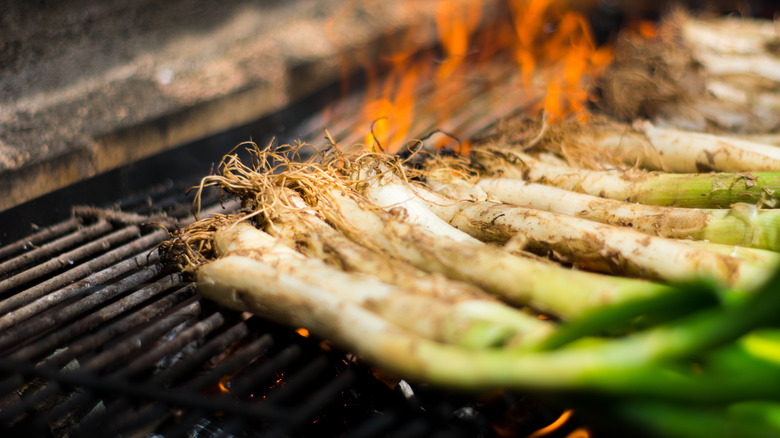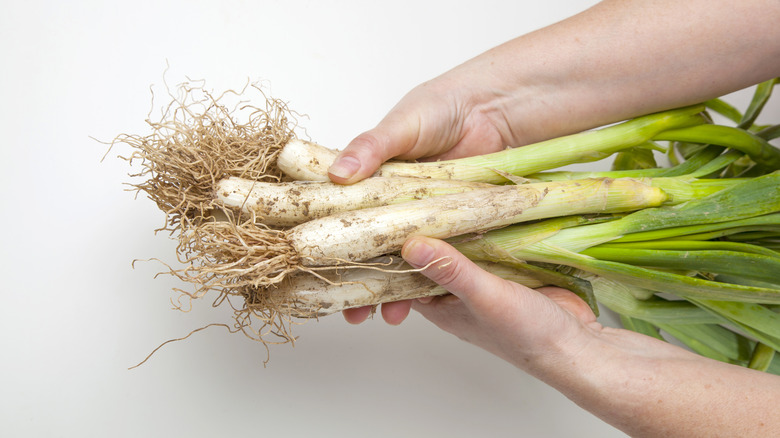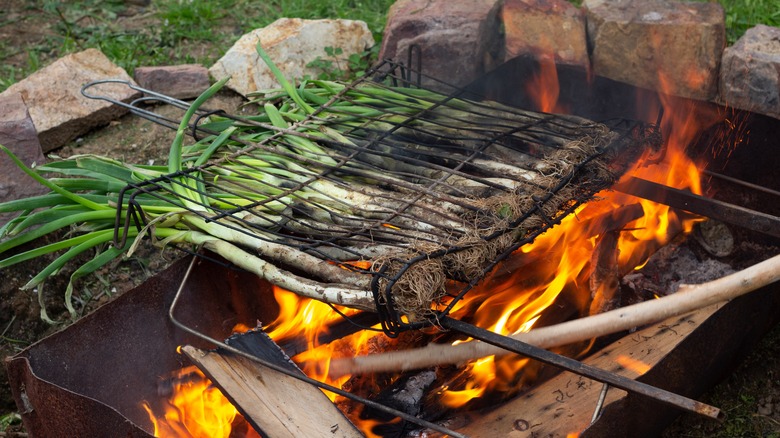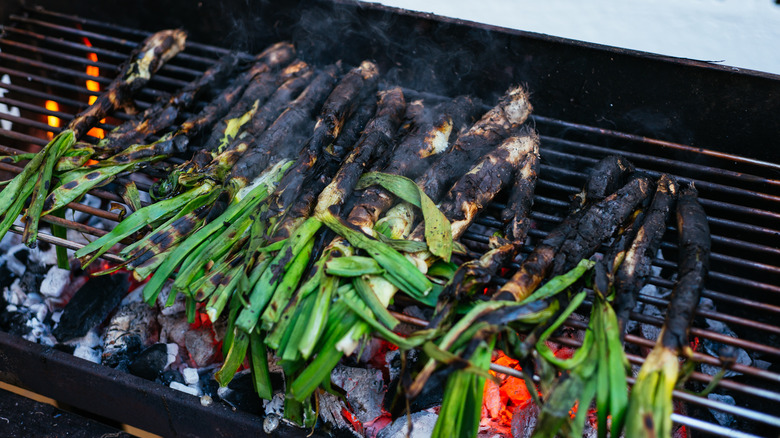What Are Calçots And How Do You Eat Them?
If you've never heard of calçots, you're not alone. These unique onions, deeply rooted in Catalan cuisine in Spain, are distinguished by a unique cultivation method that sets them apart from your garden-variety green onions.
Calçots are a specialized type of green onion or scallion with a twist. Traditionally grown around the city of Valls in Tarragona, Catalonia, these elongated, slender onions have earned a special status, as they are designated with an EU Protected Geographical Indication. This means that only calçots grown in this specific region can be considered "true" calçots, granting them a geographic distinction similar to other gourmet products, such as Roquefort cheese and Champagne. Additionally, an annual festival, known as calçotada, is held in their birthplace to celebrate the harvest.
What makes calçots unique is their cultivation process. Farmers plant the onions close together and mound soil around them as they grow. This technique results in exceptionally long, tender, and mild-flavored stalks that boast a sweet, nutty taste.
The difference between calçots and other green onions
Calçots — scientifically known as "Allium cepa" — share some similarities with regular green onions, particularly in their nutritional profile. Generally, one half-cup of green onions contains about 10 calories and offers a variety of minerals and vitamins, including vitamin C, vitamin A, iron, dietary fiber, and calcium.
However, calçots exhibit several distinctive characteristics. First, they are much larger and longer than typical green onions, reaching lengths of up to 12 inches and featuring a thicker stalk. They are also distinguished by their unique cultivation method, said to have been invented in Valls by a 19th-century farmer. As the onion grows, farmers pile dirt around the stem, blocking it from sunlight — a procedure akin to growing white asparagus. Instead of developing a wide bulb like a regular onion, the calçot continues to elongate. The term "calçot" derives from the Catalan word "calçar," meaning "to shoe." The name alludes to the way farmers mound soil around each plant, making it appear as if each one is wearing a little dirt "shoe." This mounding technique imparts a unique texture and flavor to the calçots.
How do you eat calçots?
Calçots have a distinct taste that sets them apart from ordinary green onions. They offer a subtly sweet and juicy flavor, much milder than the pungency of regular green onions, making them delightful when eaten on their own.
Typically, calçots are roasted over open flames in Catalonia. When in season from December to March — although sometimes the season can begin in November or stretch into April — people host calçotadas, parties specifically organized to celebrate these unique onions. The calçots are harvested and roasted until their exteriors turn black. They are then served either wrapped in newspaper or placed on terracotta tiles. Partygoers, often encouraged to wear napkins or bibs around their necks due to the messy nature of the feast, peel off the charred outer layer. They then tilt their heads back to consume the tender interior whole. This is usually accompanied by a rich and nutty variation of romesco sauce known as Salbitxada or Catalan Sauce, along with a variety of grilled meats such as lamb, pork, and even rabbit.
How to buy and cook calçots at home
Being geographically defined, calçots are not easily found in local markets, although some online stores may ship them when in season. Otherwise, the closest relatives to calçots are large spring onions or young leeks.
If you're fortunate enough to find genuine calçots, follow Catalan tradition by roasting them over an open flame. Alternatively, broiling them on high heat in an oven will suffice. Once charred, wrap them in newspaper or foil, allowing the residual heat to steam them until tender.
As the calçots steam, it's time to prepare the Salbitxada sauce. In a food processor, combine blanched almonds, hot peppers, tomatoes, parsley, garlic, red wine vinegar, olive oil, and ground pepper. Pulse until the mixture forms a roughly textured sauce. To eat, simply peel the charred outer layer from the calçot and dip the tender white stalk into the sauce, enjoying it whole and eaten by hand.




